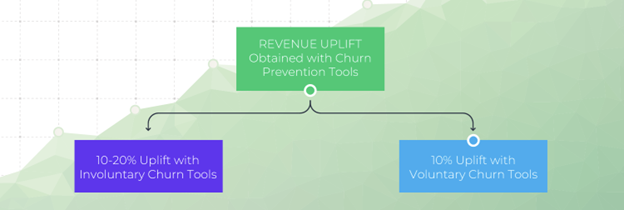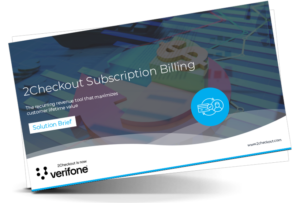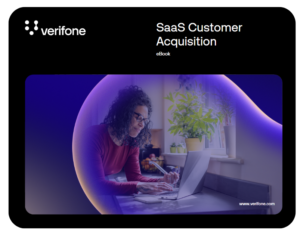Revenue leakage in a subscription business occurs due to inefficiencies or gaps in one or more of the subscriber lifecycle stages.
These leaks can seriously affect your growth, cutting into profits and slowing down expansion.
To tackle and reduce these losses, it’s important to look at the various stages of the subscriber lifecycle: acquisition, activation, retention, renewal, and expansion. Each stage comes with its own set of challenges and opportunities.
Acquisition Stage Pitfalls – Identifying Leakage Sources
In the acquisition stage, the focus is on attracting potential subscribers. However, several issues can cause revenue leaks at this stage:
Ineffective Marketing Campaigns: Poorly targeted marketing efforts result in low-quality leads that do not convert to subscribers or that initially convert but quickly churn. The result is wasted marketing dollars and missed revenue opportunities.
💡 Improvement Tip: By focusing on precise targeting and segmentation, subscription businesses can attract higher-quality leads, reduce wasted marketing spend, and increase conversion rates.
At the same time, not all acquired leads will convert right away! Instead of categorizing them as “disqualified,” add them to nurturing drips. Take a product-led approach by encouraging sign-up to a free trial, freemium version, or lower-tier product. This breaks down barriers in the buying process and allows prospects to experience the product firsthand, making them more likely to be receptive to upsells via a sales-led approach later.
Poor Pricing Strategy: A pricing model that does not meet customer needs can deter potential subscribers.
💡 Improvement Tip: It’s important to offer pricing plans that reflect the perceived value and affordability for different customer segments. Keep in mind that pricing needs to evolve, it’s not a set and forget approach.
Friction in the Sign-up Process: A complicated or lengthy sign-up process can discourage potential subscribers from completing their registration.
💡 Improvement Tip: Simplifying and streamlining the sign-up process is critical to reducing drop-offs.
Dive deeper into how to improve acquisition > Check out this eBook on Customer Acquisition For Digital Goods and Services Companies
Understanding Leakage at the Activation Phase
The activation stage, which includes the critical onboarding part, involves converting new subscribers into active users who engage with the service.
Lack of Alignment on the Definition of “Activation”: Different team members might have varying understandings of when a customer is considered successfully onboarded. This inconsistency can lead to inefficiencies and missed opportunities for improving customer activation, ultimately impacting the overall success and growth of the business.
💡 Improvement Tip: Pay special attention to this stage of the customer journey because it can be tricky. Let me explain. It’s easy to understand when a user has completed the sign-up process or when a user renews. However, it’s not always clear when a user is considered “fully onboarded” and, more importantly, what actions they need to take to understand the value they’ve been promised.
Alignment on the customer journey is a key aspect and is typically a cross-departmental effort: marketing, product, customer experience.
Slow Onboarding: As an integral part of the activation phase, onboarding is critical for subscription businesses. Slow onboarding processes can lead to subscriber frustration and churn. What can cause slow onboarding and how can it be mitigated? Simply put, a slow onboarding may result from a complex or ambiguous onboarding process, poor customer support, technical problems, or insufficient user education.
💡 Improvement Tip: These can be mitigated by simplifying onboarding steps to make them intuitive and user-friendly, or by providing clear instructions, tutorials, and resources to help users understand and effectively use the service.
Faster activation also results from streamlined, automated onboarding processes.
Unclear Value Proposition: If new subscribers do not quickly understand the value of the service, or if there is a disconnect between what was “promised” in marketing messages and what they find in the service, they may become confused or frustrated, leading to early churn.
💡 Improvement Tip: Define a clear value proposition and ensure that it is communicated consistently across all marketing channels.
Most importantly, make sure that what you promise is evident in the product. Is it easy for users to experience the promise? Do they understand the value? Implement feedback loops to gather insights from new subscribers about their initial experiences and perceptions.
Confusing Subscriber Analytics: Without transparent and clear insight into subscriber behavior and lifecycle events, it’s difficult to understand and effectively deliver onboarding experiences, especially for subscribers acquired across multiple platforms.
💡 Improvement Tip: All the analytics you rely on to make decisions must be based on – and reflect – the customer journey you all agreed upon. Get your data analysts (or your data geek colleague) at the same table with your marketing and product people to get aligned on the customer journey and your objectives as a team.
Retention Stage: Potential Leakage Reasons
Retention is critical for sustaining revenue in a subscription business. Improving retention – and reducing subscriber churn – is important to keep your customer lifetime value (CLTV or CLV) high and a positive ROI on customer acquisition.
Lack of Understanding the Reasons Behind Poor Retention poses a significant challenge.
💡 Improvement Tip: Businesses should prioritize regular analysis of retention metrics and customer behavior.
Monitoring leading indicators of churn – retention rate, churn rate, CLTV, etc. – and understanding why churn is happening is extremely important, and that includes both passive and active churn. Passive churn is when a customer churns but has not taken any active steps to do so. Active churn is when a customer churns on purpose; they have taken the trouble to cancel their subscription, perhaps even before renewal time.
What are the implications for this? As a team, you need to gather insights from data analytics and customer feedback to uncover reasons for churn. It’s also very important to analyze retention – and churn – based on the customer stage. Are you losing customers before or after onboarding. Before or after making the first payment? Is that payment required before or after they have experienced the value of the service, and so on.
Optimizing the overall user experience, enhancing customer support, and implementing effective loyalty programs are strategic initiatives that can improve retention rates.
Common Causes of Revenue Leakage at Renewal
Renewals are a critical touchpoint for a subscription business and are closely tied to retention. A key indicator of healthy retention is the renewal rate, whether monthly or annual.
Even if you have ensured a smooth customer journey, great product value, and excellent customer support, there can still be lapses at renewal time that can affect your renewal – and retention – rates.
Involuntary Churn: Since renewals for subscriptions are inextricably linked to payments, let’s first examine some technical details related to this aspect. Failed payments, often due to expired credit cards or insufficient funds, can prevent users from renewing their subscription, leading to passive or involuntary churn. This type of churn is split between two categories: hard and soft declines.
- Hard declines are permanent authorization failures that cannot be recovered. They account for 10-20% of total declines.
- Soft declines are temporary authorization failures that may be successful after a subsequent attempt. They account for 80-90% of total declines.
💡 Improvement Tip: Automated billing systems can help mitigate this risk with capabilities such as the Account Updater service (automatic update of expired card details), advanced retry logic, and dunning management (collections) – that recovers revenue even from hard declines.
Other solutions include offering alternative payment methods, and engaging customers via more channels – for example via a call center and email marketing.
Check out: Revenue Recovery Tools for Involuntary Churn from 2Checkout (now Verifone)’s that achieve up to 20% revenue uplift.
💡 Improvement Tip: Offer automatic renewal options for as many payment methods as possible to avoid potential friction and renewal delays.

Payment options with automatic renewals, for increased renewal rates. Source: 2Checkout (now Verifone).
Voluntary Churn: Unlike involuntary churn, which is typically due to payment failures, voluntary churn is a deliberate decision made by the subscriber. Reasons for voluntary churn can include dissatisfaction with the service, changes in financial circumstances, finding a better alternative elsewhere, or no longer needing the subscription.
💡 Improvement Tip: Addressing voluntary churn requires understanding the motivations behind customer decisions to cancel their subscription plan. By gathering feedback through exit surveys, analyzing usage patterns, and monitoring customer interactions, businesses can identify common reasons for voluntary churn.
Strategies to reduce voluntary churn may involve improving service quality, enhancing customer support, offering personalized retention incentives, or providing flexible subscription options that better align with customer needs and preferences.
There are also subscription management tools at your disposal that can help combat voluntary churn when a user hits the cancel button – from renewal discounts to subscription pause capabilities, make sure you have them available and enabled to help you do the important work behind the scenes.
💡 Improvement Tip: Instead of churning when discounts are not enough, you want to encourage subscribers to move to lower-priced plans when they do not see enough value in higher-tier subscription plans. Downgrading requires addressing both pricing and perceived value.
Check out: Subscription Management Options from 2Checkout (now Verifone) that help combat voluntary churn.

Voluntary and involuntary churn prevention – potential revenue uplift. Source: 2Checkout (now Verifone)
Poor Communication: Without reminders, subscribers may forget to renew or simply become frustrated with the lack of communication, leading to churn.
💡 Improvement Tip: Automated reminders are a simple yet effective approach.
Email offers and reminders are a good place to start: the timing and frequency of your renewal reminders need to be adjusted for manual and automatic renewals.

Notification timing example for subscriptions with manual renewal. Source: 2Checkout (now Verifone)
Subscription enrollment and migration campaigns to convert your manual renewal customers to auto-renew are also great tactics to increase your renewal rates and customer satisfaction with uninterrupted subscription use.
Friction in the Renewal Process: A cumbersome renewal process can discourage subscribers from continuing their service.
💡 Improvement Tip: Similar to optimizing the sign-up and onboarding process, ensuring a seamless and easy-to-use renewal process is critical.
Unexpected Price Increases: Sudden price increases at renewal can lead to subscriber dissatisfaction and churn.
💡 Improvement Tip: In addition to using subscription management tools and a robust rating engine to properly manage price increases, consider implementing proactive communication strategies.
Notify subscribers well in advance of upcoming price adjustments, and clearly and empathetically explain the reasons for the changes. Offer options such as grandfathering for current or loyal customers or discounts on renewed subscriptions to maintain customer satisfaction.
One thing is certain: transparency and proactive communication are key to effectively managing price changes and minimizing churn.
 Learn how to build long term recurring revenue by strengthening customer relationships with 2Checkout (now Verifone) Subscription Billing.
Learn how to build long term recurring revenue by strengthening customer relationships with 2Checkout (now Verifone) Subscription Billing.
Expansion Stage – Potential Leakage Reasons
The expansion phase refers to up-selling and cross-selling to current subscribers. This stage presents plenty of challenges, so let’s address and mitigate some common issues.
Missed Upsell Opportunities: Failure to identify and act on upsell opportunities means missing out on potential revenue.
💡 Improvement Tip: Personalized recommendations based on usage data can help. Analyze how your customers use your software to make the most relevant offers. This approach not only increases the likelihood of a successful upsell, but also improves customer satisfaction and loyalty.
Lack of Upgrade Incentives: Subscribers need compelling reasons to upgrade their plans. Without solid reasons and attractive incentives, customers are less likely to see the value in moving to a higher tier.
💡 Improvement Tip: To encourage subscribers to take the next step, give them clear, useful reasons to upgrade.
How to do this: Offer additional features on a free-trial basis, discounts, or value-added services to incentivize upgrades. Free trials allow users to experience premium features without commitment, making the decision to upgrade easier. Discounts create a sense of urgency and added value, while additional services enhance the overall appeal of the higher-tier plans.
Key Elements Throughout the Subscriber Lifecycle Stages
- Security
Security is critical at every stage of the customer journey for subscription businesses. From sign-up to renewal, protecting customer data and ensuring secure transactions builds trust and loyalty.
Customers are more likely to stay with a service that prioritizes protecting their information.
Robust security is not just a technical issue, it is critical to customer retention and satisfaction. By improving fraud detection, customer authentication, and overall security, companies can reduce the risk of fraud. These measures help ensure accurate renewals, prevent unauthorized transactions, and protect revenue.
- Automation
Automation is an essential tool for subscription businesses to combat revenue leakage. We’ve covered its importance at various stages, but it’s worth repeating.
Streamlined onboarding processes can lead to faster activation, allowing customers to quickly realize the value of the service and reducing the risk of early churn.
Automated billing systems can significantly reduce payment failures by ensuring timely and accurate processing of transactions. In addition, automated dunning processes can help effectively manage failed payments, reducing the time and effort required to recover lost revenue.
By automating communication, renewal reminders and offering seamless renewal options, as well as active churn prevention mechanisms, companies can ensure that customers are well informed and encouraged to continue their subscriptions without interruption.
- Data and Analytics
Leveraging data and analytics is key for subscription businesses looking to combat revenue leakage. Precise targeting and segmentation allow companies to tailor their offerings to specific customer needs, increasing satisfaction and retention. Regular usage tracking provides insight into subscriber behavior, enabling personalized content and communications that keep users engaged.
By identifying churn risk factors, companies can proactively intervene before customers decide to leave. This can include conducting exit surveys to understand the reasons for churn and developing win-back campaigns to re-engage former subscribers.
Tracking key metrics is also critical to measuring success and identifying potential leakage points. Metrics such as customer lifetime value (CLTV), monthly recurring revenue (MRR), churn rate, and customer acquisition cost (CAC) provide valuable insight into the health of the business.
It’s important to add that the use of data and analytics not only helps prevent revenue leakage, but also supports the strategic growth of the subscription business.
Conclusion
Stopping revenue leakage in a subscription business requires a comprehensive and continuous improvement approach that spans the entire subscriber lifecycle.
Key strategies include investing in automation, strengthening fraud detection, leveraging data and analytics, optimizing the customer experience, and aligning team efforts.
By continuously monitoring key metrics and adjusting strategies based on data insights, organizations can minimize revenue leakage and achieve a robust subscription business model.
And let’s not lose sight of the fact that keeping subscribers engaged and satisfied with regular updates, improved features, and educational content is critical to sustainable revenue growth.






